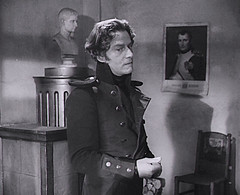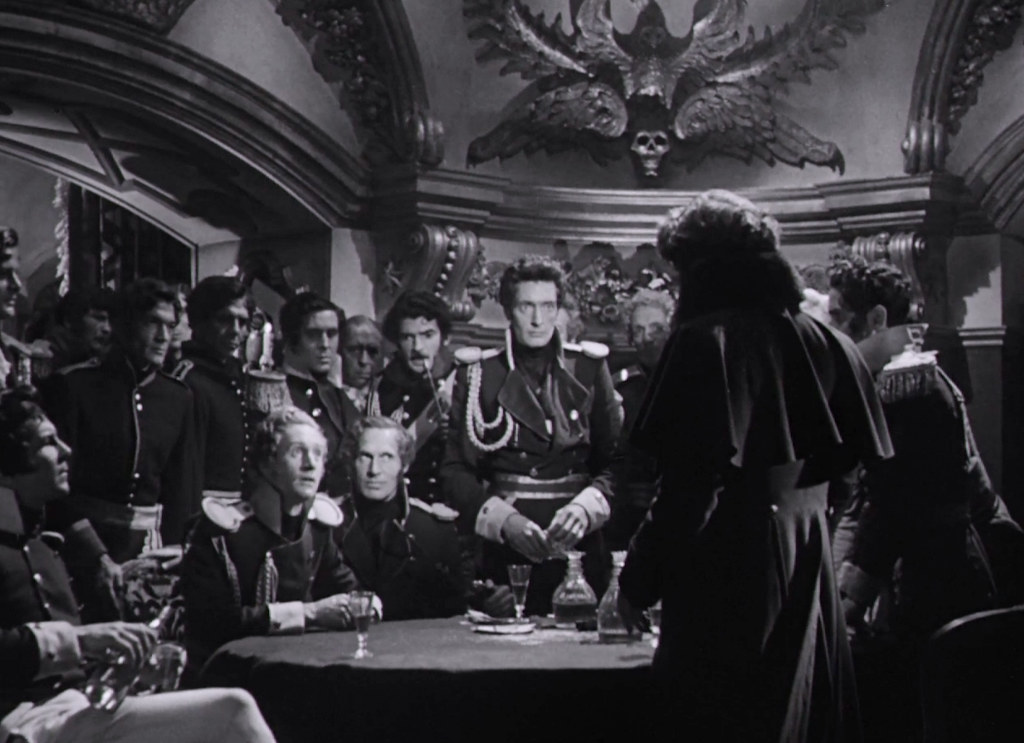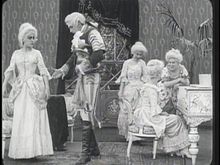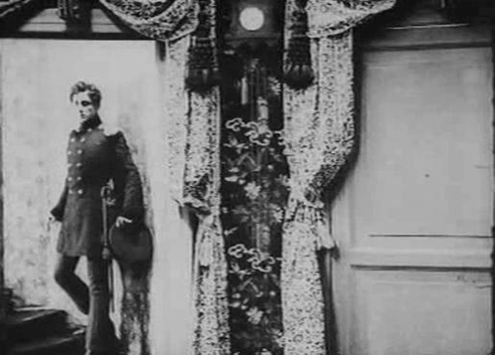ESTA CRÍTICA CONTÉM SPOILERS
THIS
ARTICLE HAS SPOILERS
Ver um
filme que é elogiado pela maioria dos críticos e também por diretores como
Martin Scorsese e Wes Anderson é como fazer uma aposta segura. A obra-prima
britânica de horror “A Dama de Espadas”, baseada em um conto russo, foi
considerada perdida até 2009, quando foi redescoberta e restaurada – para hoje
termos a sorte de poder vê-la.
Watching a
film that is praised by most critics and also by filmmakers like Martin Scorsese
and Wes Anderson is always a safe bet. The British horror masterpiece “The
Queen of Spades”, based on a Russian short story, was considered lost until
2009, when it was rediscovered and restored – and now we’re lucky to be able to
watch it.
O ano é
1806. Um novo jogo de cartas chamado Faro se tornou febre na Rússia. O capitão
Herman Suvorin (Anton Walbrook), entretanto, parece ser imune a esta febre. Ele
tem outras coisas com as quais se preocupar: sendo um grande fã de Napoleão
Bonaparte – ele tem um busto e um quadro de Napoleão no quarto – Suvorin sonha
com uma grandeza e uma fortuna que não consegue alcançar.
The year is 1806. A new card
game called Faro has became a fever in Russia. Captain Herman Suvorin (Anton
Walbrook), however, seems to be immune to that fever. He has bigger things to
worry: a big fan of Napoleon Bonaparte – he has a bust and a painting of
Napoleon in his bedroom – Suvorin dreams with a greatness and a fortune that he
fails to achieve.
Um dia,
enquanto mexia em uma pilha de livros, ele encontra um sobre pessoas que
venderam suas almas ao diabo em troca de algo grandioso em troca. No livro ele
descobre que a Condessa Ranevskaya (Edith Evans), em 1746, vendeu sua alma ao
diabo em troca do poder de nunca perder um jogo de cartas, pois ela precisava recuperar
o dinheiro do marido, roubado por seu amante. Suvorin se alegra ao descobrir
que a condessa ainda está viva.
One day,
while perusing a bunch of old books, he finds one about people who sold their
souls to the devil to get something big as a reward. In the book he learns
about Countess Ranevskaya (Edith Evans) who, in 1746, sold her soul to the
devil so she would never lose a card game, because she needed to recover her
husband's money, stolen by her lover. Suvorin is thrilled to learn that the
Countess is still alive.
Pra
conhecer a condessa, ele decide seduzir a dama de companhia dela, Lizaveta
Ivanova (Yvonne Mitchell). A pobre Ivanova acretiva que ele realmente a ama.
Quando Suvorin está escrevendo uma carta de amor para ela, uma aranha tecendo
uma teia aparece: afinal, ele apenas quer usar Ivanova para chegar à condessa.
Assim a armadilha é representada por uma poderosa metáfora visual.
To get to
meet the Countess, he decides to seduce the lady's companion, Lizaveta Ivanova
(Yvonne Mitchell). Poor Ivanova thinks he really loves her. When Suvorin is
writing a love letter to her, a spider in its web appears: after all, he only
wants to use her to reach the Countess. It’s a trap translated in a powerful
visual metaphor.
Depois de
um baile, Suvorin consegue entrar no quarto da condessa e pergunta a ela quais
são as três cartas que nunca a deixaram perder. Antes de contar o segredo, a
condessa morre. Suvorin é mais tarde assombrado pelo fantasma da condessa e,
durante seu delírio, descobre que as três cartas são o três, o sete e o ás. Ele
então decide apostar alto no Faro, mas se engana e aposta na Rainha de Espadas
e não no ás. Enquanto isso, Ivanova descobre a verdade sobre seu pretendente.
After a ball,
Suvorin manages to enter the Countess’s bedroom and asks her for the secret of
the three cards that never let her lose. Before telling the secret, the
Countess dies. Suvorin is later haunted by the Countess’s ghost and, during his
delirium, he learns that the three cards are the three, the seven and the ace. He
then decides to bet high on Faro, but mistakenly bets on the Queen of Spades
instead of on the ace. Meanwhile, Ivanova learns the truth about her suitor.
“A Dama de
Espadas” é um excelente filme com grandes atuações, trilha sonora arrepiante e
um design de produção maravilhoso. Os figurinos e em especial os cenários,
todos lindamente feitos., foram os meus aspectos favoritos do filme.
“The Queen of
Spades” is a terrific film with great performances, chilling music and
outstanding production design. The outfits and in special the sets, all of them
beautifully made, were my favorite aspects of the movie.
Anton
Walbrook – hoje mais lembrado como Lermontov em “Os Sapatinhos Vermelhos”
(1948) – tem em “A Dama de Espadas” provavelmente a melhor performance de sua
carreira. Como Suvorin, ele é extremamente ambicioso, um mentiroso e
manipulador que se rende à loucura em uma sequência que é de arrepiar e
demonstra seu enorme talento. É com certeza uma das melhores performances em um
dos melhores filmes de terror feitos na Inglaterra.
Anton
Walbrook – now better remembered as Lermontov from “The Red Shoes” (1948) – has
in “The Queen of Spades” probably the best performance of his career. As
Suvorin, he is overly ambitious, a liar and a manipulator who descents into
madness in a sequence that is a thrill and a demonstration of his huge talent.
It’s certainly one of the top performances in one of the top horror movies made
in England.
Yvone
Mitchell era uma novata em “A Dama de Espadas”. O mesmo quase poderia ser dito
sobre Edith Evans, que estava de volta aos cinemas depois de uma breve
experiência na era muda. O perfil de Yvonne e suas expressões me fizeram
lembrar um pouco de Ingrid Bergman, e ela atua bem, mas o filme pertence a
Walbrook.
Yvonne
Mitchell was a newcomer in “The Queen of Spades”. The same could almost be said
about Edith Evans, who was back to the film world after a brief experience in
the silent era. Yvonne's profile and expressions reminded me a bit of Ingrid
Bergman, and she delivers a good performance, but the film belongs to Walbrook.
O diretor Thorold
Dickinson foi escolhido para dirigir “A Dama de Espadas” graças a uma sugestão
de Walbrook. Os dois haviam trabalhado juntos no filme britânico “À Meia-Luz”,
de 1940. Depois que a MGM fez sua versão em 1944, o estúdio tentou destruir todas
as cópias do original britânico, mas felizmente não conseguiram. Thorold
Dickinson dirigiu apenas nove filmes em sua carreira.
Director
Thorold Dickinson was brought to direct “The Queen of Spades” per Walbrook’s suggestion.
The two had previously worked together in the British “Gaslight” from 1940.
After MGM did its version in 1944, the studio tried to destroy all the copies
of the original British film, but luckily they failed. Thorold Dickinson only
directed nine films in his career.
“A Dama de
Espadas” é um conto escrito por Alexander Pushkin e serviu de base para uma ópera
de Tchakovsky. A história foi adaptada para o cinema diversas vezes, mais
notadamente em duas ocasiões durante a Rússia Czarista: uma vez em 1910 como um
filme de 15 minutos e novamente em 1916 em um longa de 62 minutos. A adaptação
de 1910 foi a primeira vez que a história foi transposta para as telas.
“The Queen of
Spades” is a short story written by Alexander Pushkin and was the basis for an
opera by Tchaikovsky. It was adapted to film several times, most notably in two
occasions during Czarist Russia: once in 1910 as a 15-minute film and again in
1916 in a 62-minute feature. The 1910 adaptation was the very first time this
story was seen on screen.
Muitas
pessoas classificam o filme “A Dama de Espadas” como terror, embora a parte
terrível seja apenas o delírio de Suvorin. A Inglaterra não teve grande
tradição no horror clássico no cinema – o filme de terror clássico mais
lembrado da Inglaterra é provavelmente o filme de antologia “Na Solidão da
Noite” (1945).
Many people
categorize the film “The Queen of Spades” as horror, although the horrible part
is only Suvorin’s delirium. England didn’t have a big classic horror tradition in
its film industry – the best remembered classic English horror is probably the
anthology film “Dead of Night” (1945).
Talvez por
causa do ritmo – construir toda a trama até o clímax de horror leva muito tempo
– “A Dama de Espadas” não é reconhecida como a obra-prima de terror que
realmente é. Impossível de ser filmada dos EUA anticomunistas do período, a
história russa encontrou na Inglaterra uma equipe à sua altura para novamente
ganhar vida nos cinemas – em uma belíssima versão.
Maybe because
of the pace – building everything up until the horror-themed climax takes very
long – “The Queen of Spades” is not recognized as a horror masterpiece that it
is. It would be impossible to film it in the anticommunist USA of the time, so
the Russian story found in England a perfect team to once again make it alive
on screens – in a gorgeous version.
This is my
contribution to the 6th Annual Rule, Britannia Blogathon, hosted by
Terry at A Shroud of Thoughts.











I have not seen this in years, but immediately felt chills as you related the story and shared those pictures. Anton Walbrook is magnificent and I agree that the film is indeed a masterpiece.
ReplyDeleteI have yet to see The Queen of Spaces, although I have wanted to since it was rediscovered. I am so glad you decided to write about it for the blogathon! Thank you!
ReplyDeleteI haven't seen this film in nearly a decade and it still haunts me. Anton Walbrook is astonishing; you're right, the film belongs to him and him alone.
ReplyDeleteI can only imagine how good Anton Walbrook is in this role. It sounds like a terrific film – thanks for the recommendation!
ReplyDelete